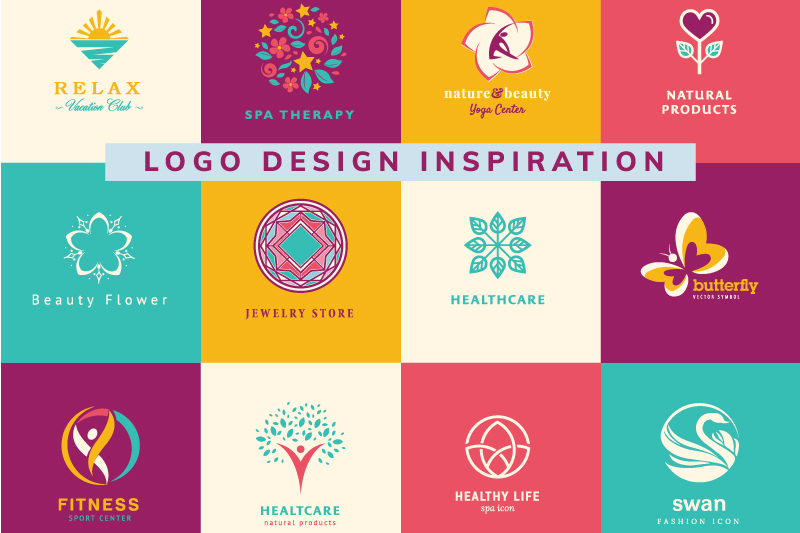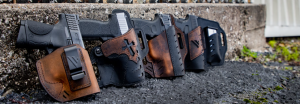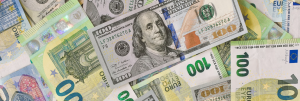Ever wondered what makes for a successful logo? Or more importantly, how you can get one for your business? Your logo is a condensed, highly symbolic representation of your brand — or at least, it should be. It’s tempting to phone it in and whip something up on Canva. But your logo is like your business’s clothing: it should express its personality and make people want to get to know it!
Why would you let your business go out looking sloppy? In this blog, we walk you through six simple tips for crafting your business’s perfect logo, from concept to final draft!
Every business needs two things to gain recognition and customer loyalty: a name and a logo. These work together to affirm your brand. When consumers see your logo, they instantly understand what your business is all about. Ideally, they also get a sense of whether they’d like to become your customer. When we think about the universal appeal of the Nike swoosh or Apple logo, it’s easy to see the importance of logos.
But what is a logo, really? And what makes a good one? Is it a simple pictorial representation of your business? Is it a unique design that can’t possibly be confused with any other brand? Is it a magic spell designed to entice your customers?
With the right approach, it can be all three. Here’s how to design the perfect logo for your business.
Step 1. Decide what you want your brand to be
Branding is a bit of a misnomer: you don’t really develop your brand, your customers do. Their experience with your business — the copy they read on your website, the colors they see on your product packaging, the feeling they get when they purchase from you, etc. — is what drives your brand. That said, your logo is an important part of that.
Think of your logo as an extension of your business’s brand identity. If your values are like your business’s personality and your copy tone is how they would talk, your logo is the outfit your business would wear to a job interview. Clean, polished, professional — but still uniquely expressive.
People are highly visual, so a logo gives them something to latch onto. They will associate this image with their brand experience. Think about how logos impact your life. Do you get excited when you see the Starbucks siren? Does the Amazon smile give you a strange urge to do some online shopping? A logo is more than a decoration to slap on your business’s brochures: it is a powerful symbol of your business and its offerings.
Step 2. Brainstorm your logo’s verbal and visual elements
Before you whip out your sketchpad, take a moment with some scrap paper and a pencil. Think about your business in an abstract, emotional way. What words, images, or colors reflect the brand identity you want it to have? Try not to draw from your existing name and tagline. Instead, focus on the values, aspirations, and sensations that your business entails. Write down words and phrases, do some doodling… just get into the flow.
Then, think about what your ideal customer would expect. Are they looking for luxury or affordability? What do they want to achieve in life? What’s their sense of humor like? Jot down some key words and scribbles for these ideas.
Take some time to think about colors and styles here as well. As a rule of thumb, dark colors express sophistication and elegance, while bright colors and curly images seem more casual and whimsical.
Now you can look at your business name. Brainstorm several words or image ideas for each portion of your name. Imagine that you’re playing word association with friends. Rather than consulting a thesaurus, open your mind to tangential connections. For example, if your business has “Ocean” in its name, you could write down “Beach,” “Seashell,” “Palm Tree,” “Dolphin,” etc. Note your brand’s styling needs as well: if you were to use a dolphin in your logo, should it be a cartoonish mascot or an elegant silhouette?

Step 3. Refine your concept
Once you’ve completed your brainstorming, it’s time to start assembling elements in a way that appeals to your target audience. This is where it can all-too-easy to succumb to clichéd, generic concepts. How many natural-food markets have you seen with a tree or leaf in the logo? Or dentist’s offices with — you guessed it — a tooth?
Look at the list of words and images you assembled, then make some unexpected combinations. Try to pair an element that communicates your business’s purpose with an element that expresses your values. For example, Dunkin Donuts’ logo features a coffee cup that appears to be in motion. It has bright colors and bold, curved lines. Dunkin Donuts’ brand personality is as clear as its purpose: they sell coffee (and presumably donuts) for people who are in a hurry.
Don’t forget to check out your competitors. You can not only draw inspiration from them (ahem) but also check that your logo concept won’t be too similar. Aim to capture the elements that seem to resonate with your target audience, but put your own spin on your concept to highlight what makes you special: fast service, luxury finishes, innovative approaches, etc.
Step 4. Choose the style of logo you want
From a single logo concept, you can create many iterations. If you were to hand your skeletal brief to a designer without specifying the style you want, you could get something totally off-brand. To avoid this, think about the aesthetic you want to use.
Most of the world’s popular logos are minimalist. Think about Target or Adidas: they’re sleek and simple. Of course, those are wildly successful brands that have had years to build up logo recognition. Their logos are so abstract that no one could guess what they sell based on the designs alone. As a new business, you’ll need to help out your audience.
Another common style is the retro/vintage look. These logos tend to feature old-fashioned fonts, hand-illustrated elements, and natural colors. This aesthetic is excellent for brands that want that homestyle, nostalgic feel.
Then of course, there’s the classic aesthetic: elegant typefaces, dark colors, and clean lines. Many people associate this look with sophistication and prestige. It’s ideal for luxury brands, as well as businesses that have some element of formality (e.g. law firms).
Finally, there’s the whimsical, quirky style beloved by startups and home-based businesses everywhere. (Although, even big brands like Little Caesar’s make good use of adorable mascots!) These logos are often made to look hand-drawn, with bright colors and a cute, casual vibe.

Step 5. Decide which logo type you need
“Isn’t that what we’ve been doing?” you ask. Yes and no. A logo concept, style, and type are all different. The type of logo refers to how it’s constructed. Some brands have multiple types that can be combined into a primary logo (think about the full Dunkin Donuts logo) yet separated into recognizable elements (e.g. just the Dunkin coffee cup).
The first basic type of logo is letter-based. It could be a lettermark (aka a monogram) or a wordmark (also called a logotype). Many big brands use this type of logo because their name is already very recognizable (think Lyft or H&M). However, lettermarks and wordmarks may be appropriate for you if you’re a personal brand or solopreneur (e.g. a coach or consultant).
Next, we have pictorial marks. These are iconographic designs that illustrate your brand without letters or words. They can be combined with your brand name (which is a good idea if you’re just starting out) or stand alone to represent your brand. Think about Pepsi or NBC. You can also create a mascot that can appear alongside your brand name or by itself.
Finally, there are emblems, the oldest type of logo. These designs resemble official seals and typically include the business name, the year established, and a tagline. The images usually look hand-drawn, etched, or stamped to give the brand an old-fashioned vibe. The aesthetic is ideal for historical businesses or locations, as well as brands with a strong vintage element (e.g. breweries, wineries, bed and breakfasts). This type of logo is notoriously hard to scale or print because it must be reproduced in whole each time.
Step 6. Put it all together and draft, draft, draft!
Whether you’re designing your logo yourself or working with a designer, it’s important to not settle on the first draft. Logos are a form of artwork: they deserve time and consideration! Share your decisions with your designer and let them work up some drafts. If you’re the one designing, create several mockups and get feedback from trusted sources. It’s important to go outside your immediate business circle. If we can learn anything from branding embarrassments such as the infamous Tropicana redesign, it’s that you must test your concept with people who aren’t connected to your business. Ask for logo feedback from your friends, family, hairdresser, bartender … anyone who hasn’t been knee-deep in branding materials for weeks.
Don’t be afraid to go through several versions of your logo. Remember, you want something that you can proudly stick everywhere! And once you’ve put your logo out into the world, it will be challenging to re-do it. So, follow these six steps to create your business’s perfect logo, and start building brand recognition across the print and digital worlds!








